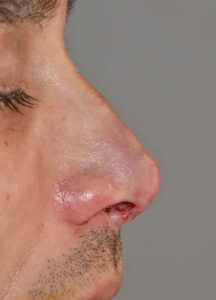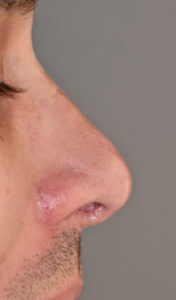Rhinoplasty can have a wide variety of pleasing aesthetic effects. But there are also some undesirable nose shape changes that can occur particularly in the tip area. The tip of the nose is prone to the greatest number of undesired aesthetic changes from surgical manipulation because of its unique anatomic composition.
It is the union of three cartilage structures (septum and the paired lower alar cartilages) that unite in the middle (midline) to create the unique shape of every person’s nose tip shape. And unlike the rest of the nose the paired lower alar tip cartilages are relatively unsupported. They are suspended out in space, much like a spring, and are held together by numerous ligaments. All of which gives the tip-off the nose flexible and the ability to moved around without injury…but also prone to adverse results for surgery which alters the cartilage’s shape.

The most well known of these post-rhinoplasty tip alterations is the polly beak deformity. This is seen in profile which appears as a dorsal convexity located in the supra tip area which then appears to push the nasal tip downward. It can occur from multiple causes from failing to reduce septal height all the way down through the septal angle, excessive prominence of the tip cartilages and the formation of excessive scar tissue in the supra tip area, to name the most common.
In the non-thick skinned nose the most common reasons for the polly beak deformity are structural in nature. Failing to support the tip of the nose with a columellar strut and too high of a septal height in the tip area int tandem will create it. Its treatment, as illustrated in this case, is to make the necessary cartilage structural additions and subtractions.
Dr. Barry Eppley
Indianapolis, Indiana




